Aichi Prefectural University Faculty of Information Science
February 2015
![]() Aichi, Japan
Aichi, Japan

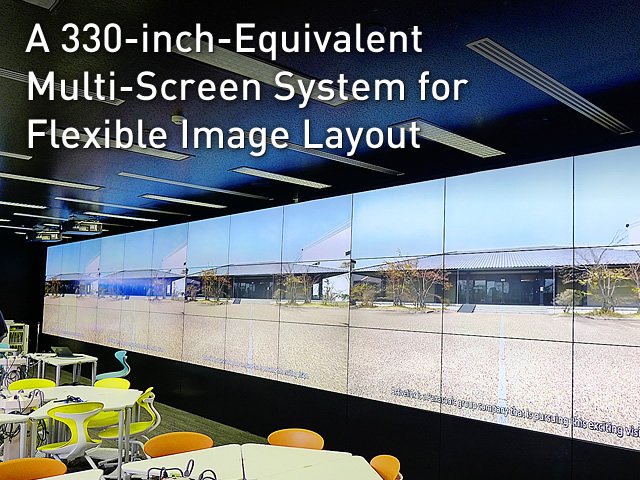
Installation Details
Creating a New Learning Common Environment to Nurture New-Generation Information System Technicians
In order to cultivate information system technicians who are capable of operating in today's information-oriented society, the Faculty of Information Science at Aichi Prefectural University focuses on the learning and research of advanced information technologies. In line with this goal, the university decided to renew its computer seminar room to construct a learning common environment that would provide students with greater flexibility for discussion.
A multi-screen system consisting of 36 Panasonic displays was selected for the main video unit.
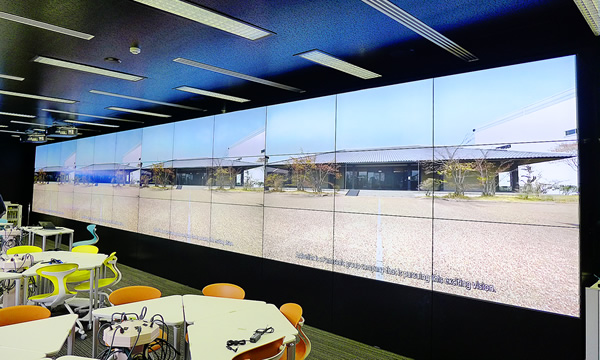
Active Discussion Promoted by a Flexible Image Layout on Several Large Screens
As a response to current trends, the Faculty of Information Science at Aichi Prefectural University renews the computer seminar room about every five years. The new room, which is the 4th-generation facility, was designed under the theme of constructing an environment for free and active discussion by enabling a variety of information to be compared. It was decided that around 40 students would be able to use the video display at a time, transmitting images from their computers to the large screens, freely positioning the images, and sizing them as desired.
The following features of Panasonic LCD displays with multi-screen capabilities were considered for constructing the system:
- The wide viewing angle and anti-glare features of the IPS panel would keep the images clear even when viewed from the edges of the room.
- The ultra-narrow bezel design would keep the space between displays only 3.5 mm.
- The high 700 cd/m² brightness would provide sharp, crisp images even in a brightly lit room.
In addition to these features, Panasonic's comprehensive expertise, such as the software technology to accurately control the images sent from from 40 computers, was highly evaluated, leading to the decision to install a multi-screen system with 55-inch TH-55LFV70 displays at the core.
The 36-Screen Multi-Vision System that was installed comprises 3 units vertically and 12 units horizontally, for a 330-inch-equivalent screen that fills an entire wall of the computer seminar room.

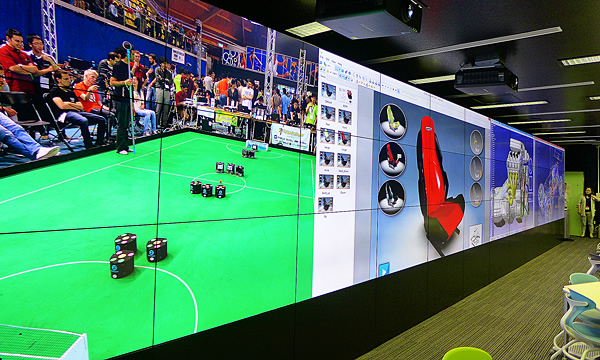
Example of Use in Class
A Video System for Flexible, Large-Screen Layout of Images from Multiple Computers
The 36-Screen Multi-Vision System installed in the computer seminar room is connected by HDMI cables to 40 student computers that were installed at the same time as the system. Because the cabling can become complicated, a "radial pole" was developed that combines the HDMI terminals and cables for eight computers into a single unit, and five radial poles were installed in the room. The radial poles are equipped with casters for easy movement, allowing changes in the layout to match the class activities and seminars.
The HDMI signals from the computers pass through the radial pole and are concentrated in a Pre-Processor. They are then divided into video and audio signals. The video signals are sent to a Multi-Vision Processor and displayed on the 36-Screen Multi-Vision System.
The software for video control was newly developed by applying technology accumulated by the Panasonic iPRO Series network cameras. While checking the image from each computer with a previewer, the position and size of the image are freely laid out and displayed on the 36-Screen Multi-Vision System. To allow use by anyone, the software was installed on all of the computers in the room.
The 36-Screen Multi-Vision System, with its flexible layout of multiple images onto a single large screen, combined with chairs, desks and radial poles that are all equipped with easy-moving casters create a learning common environment. This is ideal for a variety of styles because it matches the purpose and application for group work, discussions, presentations, and more.
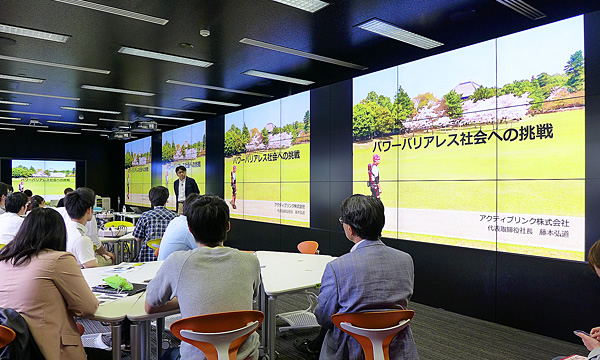
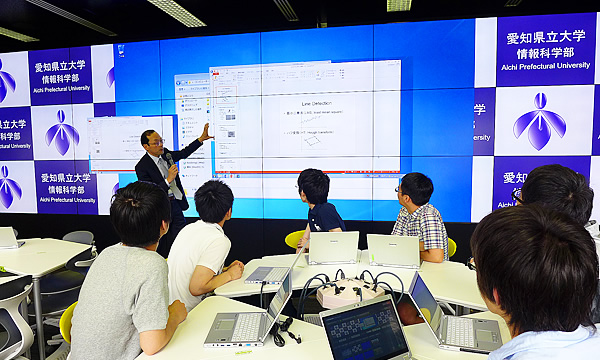
The Faculty of Information Science at Aichi Prefectural University
Higher Education/Research Institute for Learning "Advanced Information Technologies to Support Innovative Manufacturing"
The Faculty of Information Science at Aichi Prefectural University devotes much of its effort to the field of robotics, as evidenced by the strength that allowed them to claim 3rd place worldwide in the "RoboCup Soccer" competition in 2014.
After firmly learning the basics for the first 1-2 years, students divide into courses, such as "Media Robotics," "Simulation Science," and "Information Systems." This method of using the curriculum to enhance capabilities in specialized fields is also a feature of this university, and helps to achieve the students' extremely high, employment rate of approximately 97% upon graduation.

Equipment installed
- Video Wall Display
TH-55LFV70 x 36


